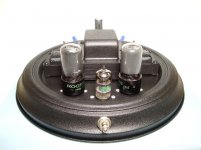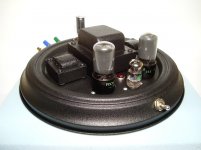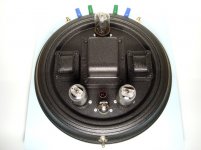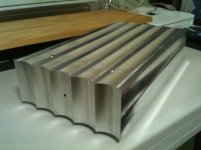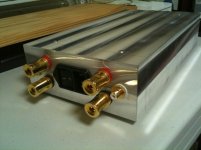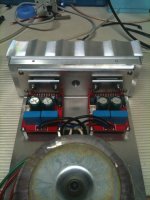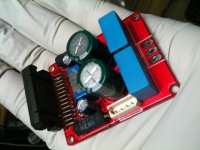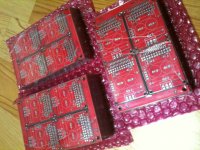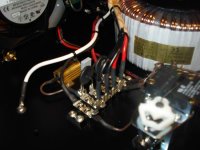Does it really matter?Lost Eden and Witti.
Have a look at post1979.
You could attach your pics in a similar manner.
I believe that Andrew's suggestion is based on the fact that images stored in the forum server(s) will not get lost (disappear); the same cannot be said about images stored elsewhere in case the links to them get broken (for whatever reason). You can see what a pain that is when you browse through old posts and have all those missing images.Does it really matter?
I guess that another benefit is a limit on the resolution (i.e. size) of the posted image(s).
Just my two cents...
Last edited:
three_legend - Fantastic construction. Very well done. Clean, attractive, beautiful.
All gainclone builders should endeavor to make their work as good as yours.

Question - What is the EI transformer for?
Thanks for your appriciate
Answer: Because most of my source (CD Player) have input voltage 100v, so I just put the step-down transformer in the amp box
LM4780 parallel dual amp
WOW, this is an Oh My God kind of picture! Great job!
LM4780 parallel dual
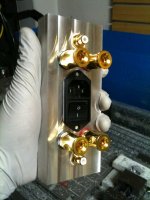
TEST PCB
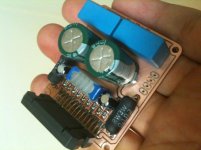
Completion PCB 2layer cnc cut
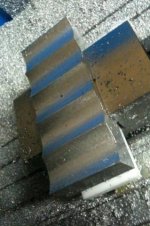
audio output / input AC power rear panel
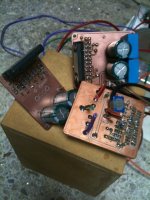
heat sink block
I made it absolute use CNC in my working room.
Streamvox - That is the most attractive chipamp chassis I have ever seen!!!!! Bravo!!
Absolutely beautiful! Did you make it?

TEST PCB

Completion PCB 2layer cnc cut

audio output / input AC power rear panel

heat sink block
I made it absolute use CNC in my working room.
Attachments
Nothing compared to the last amp posted, but I finally got my LM3886 monoblocks into an operational state. Still got some work to do before putting them into regular use, such as replacing the dodgy earth wiring & making some sort of lid/cover for them, but at least they both work now!
An externally hosted image should be here but it was not working when we last tested it.
An externally hosted image should be here but it was not working when we last tested it.
Lost eden..... you DEFINITELY have to redo that mains ground line (stranded copper wire slipped under one of the chassis mounting feet bolts)--or make certain your personal life insurance is current and paid..... 
In fact, all your mains connections would be better served if you used crimp on connectors that fully encose the terminal strip screw. In fact, when I use these crimp on connectors, I crimp them on, and then run solder over the connection. (A piece of heat-shrink tubing slipped back on the wire lead, and then "shrunk over" the wire-connector makes for a neat construction practice.)
I'd also go with larger wire gauge for leads between your power supply boards and amp PCBs, and between your amp PCBs and your Chinch-Jones terminal blocks.....(!)
In fact, all your mains connections would be better served if you used crimp on connectors that fully encose the terminal strip screw. In fact, when I use these crimp on connectors, I crimp them on, and then run solder over the connection. (A piece of heat-shrink tubing slipped back on the wire lead, and then "shrunk over" the wire-connector makes for a neat construction practice.)
I'd also go with larger wire gauge for leads between your power supply boards and amp PCBs, and between your amp PCBs and your Chinch-Jones terminal blocks.....(!)
Now that's neat, and different-looking for a chip amp, less esoteric and more "industrial." The one-piece angled plate frame (or is that two plates at 90 degrees? it's hard to tell) is reminiscent of the old open-frame analog power supplies.
I could see one being mounted on the back or inside a speaker cabinet (or two or more such monoblocks for biamping and such) to make "active" speakers. These "modular monoblocks" are a remarkable idea.
I could see one being mounted on the back or inside a speaker cabinet (or two or more such monoblocks for biamping and such) to make "active" speakers. These "modular monoblocks" are a remarkable idea.
Lost eden.....it's not my intent to hijack this chipamp photo gallery thread, but I've attached a pic of the mains wiring on one of my (Class A) amps, so you can see how I've "dressed out" my ground lead (white wire) and other line voltage connections. I'm not an expert on fabrication, but you might want to consider the wiring connectors, use of heat-shrink, etc, etc, in your final construction.
Enjoy, Ken
Enjoy, Ken
Attachments
Chill guys, I fully intend to redo the power wiring, as I said in my post!
They are unfinished - I haven't decided how to finish the chassis (& thus how to finally run power into them) as I don't yet know how I'll be using them. Wiring a mains lead directly to the terminal strip is just a temporary measure for testing. The dodgy earth wire is only there because I didn't want to test them (even just for a few minutes) without earthing.
The wires going from the power supply to the amp are at least 24 gauge (I don't have a Vernier caliper to measure exactly) which would conservatively be rated for at least 3.5A continuous for a much longer run, drastically higher than anything I'm going to be putting through them. Likewise the wires between the amp board & the terminal strip are 24 gauge, but solid silver so can take even more than that.
benb - they're made from single pieces of aluminium 'angle'. I wanted to work with big chunks of metal rather than plastic project boxes which I'd used for previous amps. They'll probably end up with a perforated metal grill over them, either with a gap at the back to access the terminal strip (like SMPS power supplies you buy from China) or I may end up mounting RCA sockets & binding posts. At the very least I'm definitely going to be mounting a proper power socket, or securely & safely hardwiring a power cable to them.
They are unfinished - I haven't decided how to finish the chassis (& thus how to finally run power into them) as I don't yet know how I'll be using them. Wiring a mains lead directly to the terminal strip is just a temporary measure for testing. The dodgy earth wire is only there because I didn't want to test them (even just for a few minutes) without earthing.
The wires going from the power supply to the amp are at least 24 gauge (I don't have a Vernier caliper to measure exactly) which would conservatively be rated for at least 3.5A continuous for a much longer run, drastically higher than anything I'm going to be putting through them. Likewise the wires between the amp board & the terminal strip are 24 gauge, but solid silver so can take even more than that.
benb - they're made from single pieces of aluminium 'angle'. I wanted to work with big chunks of metal rather than plastic project boxes which I'd used for previous amps. They'll probably end up with a perforated metal grill over them, either with a gap at the back to access the terminal strip (like SMPS power supplies you buy from China) or I may end up mounting RCA sockets & binding posts. At the very least I'm definitely going to be mounting a proper power socket, or securely & safely hardwiring a power cable to them.
- Home
- Amplifiers
- Chip Amps
- Chip Amp Photo Gallery
